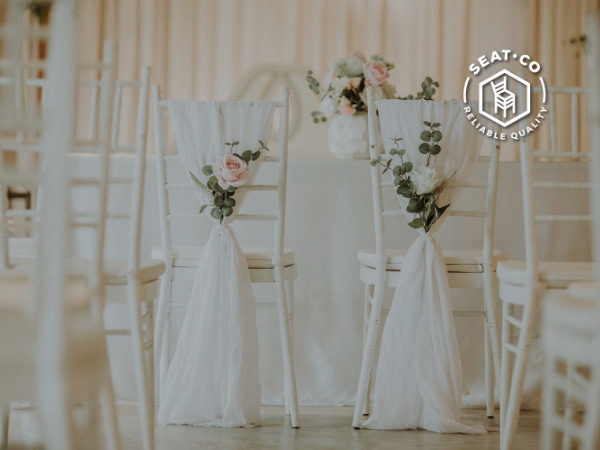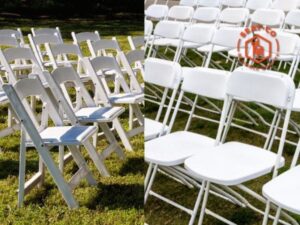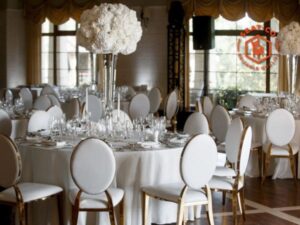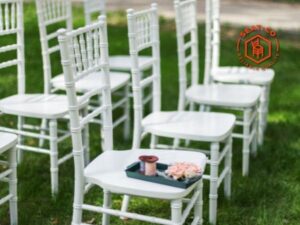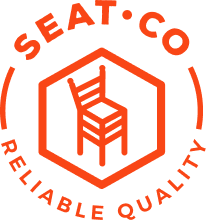Which Chair is More Profitable?
Investing Wisely: How Quality Chairs Choices Boost Party Rental Profits
Written by: Marcelo Flores
When it comes to selecting Chiavari chairs for your event rental business, two excellent options are resin and aluminum chiavari chairs. In this article we will make a comparative analysis between both options, considering the special formula for the rental industry of the American Rental Association and at the end we will see the advantages and disadvantages of each chair.
Table of Contents
1. Mastering ROI: Understanding the Formula and Utilizing Our ROI Calculator
2. Overview of Resin and Aluminum Chiavari Chairs
3. External Factors to the Product
4. Warranty Analysis: Assessing Longevity and Durability of Chiavari Chairs
5. Maintenance: Evaluating Ongoing Care Costs for Chiavari Chairs
7. Acquisition Cost: Evaluating the Initial Investment for Chiavari Chairs
8. Residual Value in the First Year: Assessing Chiavari Chairs’ Depreciation
9. Final Residual Value: Assessing Chiavari Chairs’ End-of-Life Worth
10. The Final Verdict: Resin vs. Aluminum Chiavari Chairs in ROI Analysis
1. Mastering ROI: Understanding the Formula and Utilizing Our ROI Calculator

For every business knowing their ROI (return on investment) is key. Measuring the effectiveness of every investment in your business becomes complex without the right tools, especially in the rental industry where the formula is more intricate.
The basic formula to figure out ROI is:
ROI: (Net Profit / Total Investment) x 100
As said before, for rental businesses the formula is more complete because it considers more factors. This formula, a specific one for the rental industry, was developed by the American Rental Association and is calculated as follows:
(Rental Rate x Utilization) – (Maintenance + Repair Costs) ÷ (Acquisition Cost – Residual Value) = rROIC
At first glance it seems very difficult to calculate, and that is why Seat Co developed a calculator for you to calculate the ROI of all your inventory. This way you can ensure the highest profitability in your business. For this comparison we are going to use it.
Enhance your ROI knowledge in the event rental industry with our guide, ‘Maximize ROI: The Ultimate Party Rental Playbook‘. Dive deeper into profitable strategies after exploring our Chiavari chair comparison.
2. Overview of Resin and Aluminum Chiavari Chairs
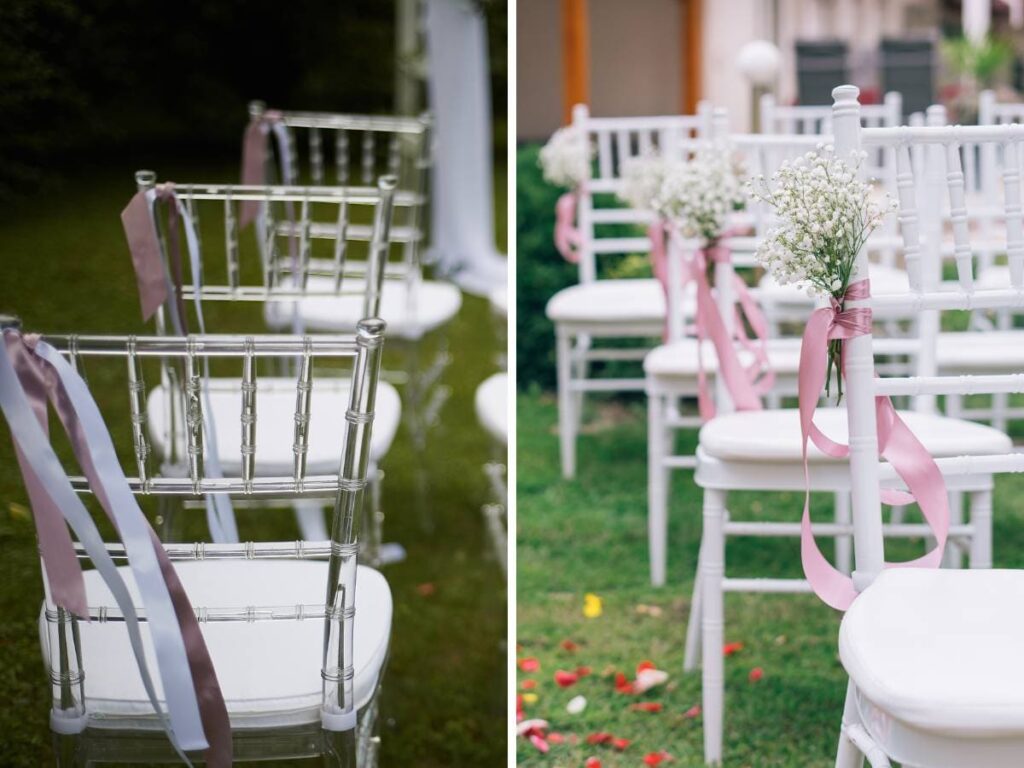
In this section, we provide a general overview of resin and aluminum Chiavari chairs, focusing on their recommended types of use, distinct characteristics, and overall appeal in the event rental industry.
Resin Chiavari Chairs: Characteristics and Use
- Description and Features: Resin Chiavari chairs are known for their durability and resistance to wear and tear. Typically made from high-quality synthetic materials, these chairs offer a balance of strength and elegance.
- Recommended Use: Ideal for both indoor and outdoor events, resin chairs are often favored for their versatility and ability to withstand various weather conditions without significant damage.
- Aesthetic Appeal: While maintaining the classic Chiavari design, resin chairs come in a variety of colors and finishes, allowing for greater customization to fit different event themes.
3. External Factors to the Product

This first section is simply to complete the formula with the same data in the categories external to the product. What do we mean by this? We are referring to the categories: Rental Rate and Utilization per Year. Although one chair or the other can make a difference in the amount of rentals and the price at which you place it, in this comparison we will be using the same numbers to focus on the other part of the formula.
Here’s how it will look so far.
4. Warranty Analysis: Assessing Longevity and Durability of Chiavari Chairs

In determining the total utilization and ultimately the ROI of resin and aluminum Chiavari chairs, the warranty provided by the manufacturer serves as a key indicator of the product’s longevity.
The length of the warranty period often reflects the manufacturer’s confidence in their product’s durability and lifespan, crucial for understanding how long the chairs are expected to perform optimally in a rental setting.
Warranty of Resin Chiavari Chairs
Warranty: Typically, good quality resin chairs have a 1 to 2 year warranty. In most cases this warranty is very limited to manufacturing defects.
Warranty of Seat Co’s Aluminum Chiavari Chairs
Warranty: Seat Co’s Aluminum Chiavari Chairs have a 7-Year Warranty which is definitely outstanding. Our warranty covers manufacturing defects, if the order arrives to you damaged due to transport, if the chair loosens at welding points and even if the paint peels (the paint can get scratched, it is normal, what is not going to happen is that it peels and the paint falls off).
In addition as it is a material which is totally immune to the outside elements it will not rust, and the paint is resistant to UV rays, so it will not change its color.
Of course, if there are defects due to misuse or negligence, the warranty does not cover it, it ceases to be valid.
So after analyzing this, we will put 2 years on the calculator for the resin chair and 7 years for the aluminum chair. Of course, both chairs can last much longer, but we will choose an objective figure that reflects the durability of both options.
5. Maintenance: Evaluating Ongoing Care Costs for Chiavari Chairs

Before we explore the specifics of Resin and Aluminum Chiavari Chairs, gain further insights on maintenance costs with our article ‘The True Cost of High Maintenance: A Guide for Party Rentals‘. This guide complements our comparison by shedding light on the often-overlooked expenses in rental businesses.
In this section, we’ll explore the maintenance requirements and associated costs for both resin and aluminum Chiavari chairs. Maintenance is a critical factor in determining the total cost of ownership and, consequently, the ROI of these chairs.
Maintenance of Resin Chiavari Chairs
In a short period of time they will most likely be maintenance free. The problem comes with use, and that is that these chairs have screws. Over time they will start to loosen and will have to be tightened, which means that time and money will have to be spent. Eventually maintenance will have to be more recurring until replacement is necessary.
Let’s break down the annual maintenance cost per chair:
- Labor Cost for Maintenance: Assuming a maintenance staff member is paid $20 per hour and can maintain 50 chairs in that hour, the cost per chair is $0.40.
- Frequency of Maintenance: With preventive maintenance performed monthly, this equates to 12 maintenance sessions per year.
- Annual Maintenance Cost Calculation: $0.40 per chair per session x 12 sessions = $4.80 per chair annually.
- Additional Expenses: Adding approximately $1 per year for replacements per chair, the total annual maintenance cost per chair is $5.80.
As you can see, maintenance sums up a lot and is key to determining the real ROI. At the end of this calculation we determined that the annual maintenance cost per chair is $5.80
Maintenance of Seat Co’s Aluminum Chiavari Chairs
Our Aluminum Chiavari Chairs, being 100% welded, are virtually maintenance-free, lacking the issue of loosening screws. The primary maintenance involves occasional replacement of glides, protective caps, and minor paint touch-ups.
Let’s estimate the annual maintenance cost:
- Replacement Parts Cost: Assuming annual replacements for 10% of the chairs (10 chairs for every 100), with 40 glides and 20 protective caps needed, plus one can of paint for all 100 chairs, the total parts cost is $64.90 ($20 for glides, $20 for caps, and $24.90 for paint).
- Labor Cost: Adding two hours of labor at $20 per hour amounts to $40.
- Total Annual Maintenance Cost: $104.90 for 100 chairs, or $1.05 per chair.
In the end, the annual maintenance cost per chair will be $1.05, which is significantly lower than that of the resin chairs.
6. Repair Costs

When it comes to calculating the cost of repairing a chair it is a bit complicated because unlike other rental items, Chiavari chairs, once broken, typically cannot be repaired. So in this section we will put 0.
There are other items that can be repaired such as sound equipment, lighting equipment or heaters, but in the case of chairs it is different.
7. Acquisition Cost: Evaluating the Initial Investment for Chiavari Chairs

In this section, we delve into the acquisition costs of resin and aluminum Chiavari chairs. The initial investment is a very important factor, not the most important, but of course it matters.
In the Acquisition Cost section you must add all the costs including shipping and any additional expenses incurred to deliver the item to your address.
Let’s see how the market is as of today when the article is published: The price for resin chairs on average is at 59.90.
And our Aluminum Chiavari Chair is $74.90.
The difference is more or less $15 but when we finish with all the categories we will see how the formula performs.
8. Residual Value in the First Year: Assessing Chiavari Chairs’ Depreciation

In this section, we calculate the residual value of the chairs after the first year of use, based on their respective warranty periods as a measure of their expected lifespan.
Residual Value Calculation for Resin Chiavari Chairs
Time Elapsed in Lifespan: For the resin Chiavari chair, with a 2-year warranty, one year represents 50% of its expected lifespan.
Residual Value Estimation: Starting with the original price of $59.90, we deduct 50% to account for the one year of use. This results in a residual value of $29.95 for the resin chair after the first year.
Residual Value Calculation for Aluminum Chiavari Chairs
Percentage of Lifespan Used: For the aluminum Chiavari chair, which has a 7-year warranty, one year accounts for approximately 14.3% of its lifespan. Rounding this to 15% offers a practical estimate for depreciation.
Residual Value Determination: With an initial cost of $74.90, reducing it by 15% for one year of use gives us a residual value of $63.70 for the aluminum chair after the first year.
Based on this calculation, the residual value after the first year is estimated to be $29.95 for the resin chair and $63.70 for the aluminum chair. These figures provide a basis for understanding the depreciation rate and remaining value of each chair type after a year of rental service.
9. Final Residual Value: Assessing Chiavari Chairs’ End-of-Life Worth
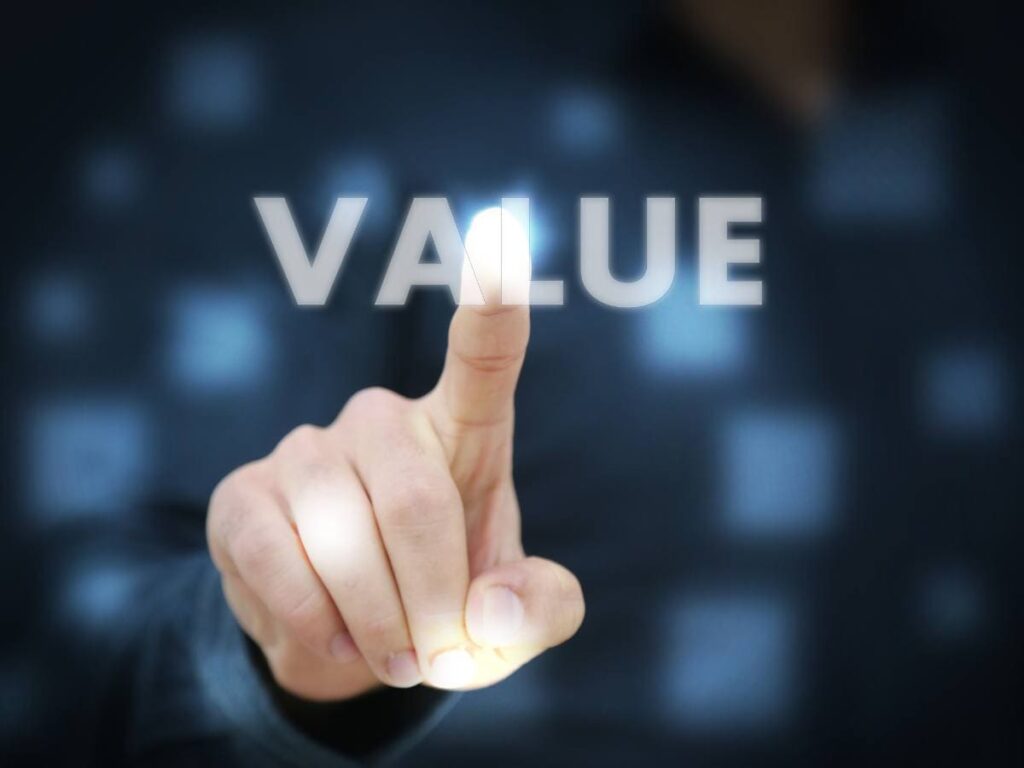
In this final section, we’ll examine the final residual value of resin and aluminum Chiavari chairs, assessing their estimated worth at the end of their usable life.
Evaluating this factor is crucial for a complete ROI analysis, as it helps you determine the potential return from the chairs when you eventually sell or replace them.
A common mistake party rentals make is to keep their inventory for too long. There comes a time when a chair is more work than the money it generates, and at that point we must replace the chair, and here the question is: how much money can I get for a resin chair and an aluminum chair?
Final Residual Value of Resin Chiavari Chairs
- Structural Integrity: Resin chairs, with their screws, may eventually lose their tightness, leading to wobbling that cannot be rectified. This structural weakness diminishes their end-of-life value.
- Aesthetic Condition: The propensity of resin to chip impacts the chair’s appearance over time, further reducing its residual value.
- Material Value and Recyclability: Although resin can be recycled, since it is a very cheap material, you will not receive anything for it. Nobody is going to buy them. When a resin chair breaks, it typically ends up as waste, offering no return value.
Considering these factors, and to provide a conservative estimate, we assign a final residual value of $10 to resin Chiavari chairs.
10. The Final Verdict: Resin vs. Aluminum Chiavari Chairs in ROI Analysis
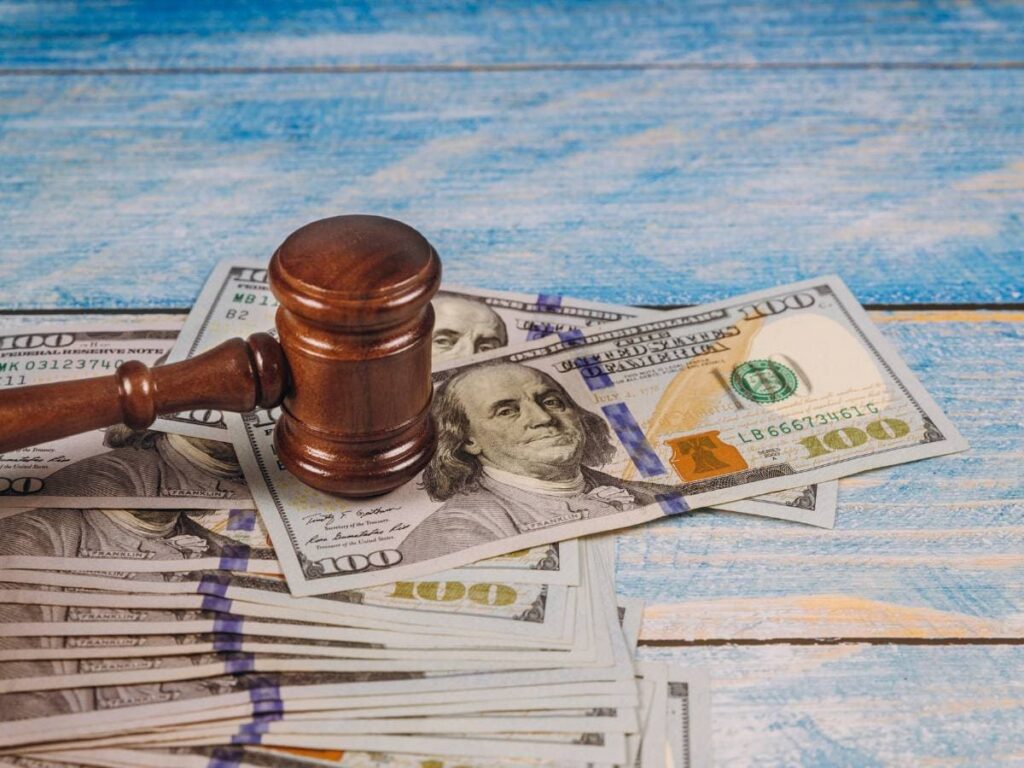
In this concluding section, we bring together all the analyzed factors, from initial acquisition cost to final residual value, to determine which chair, resin or aluminum Chiavari, offers the best return on invested capital (rROIC) according to our calculator and based in the formula provided by the American Rental Association.
The rROIC results, both annual and lifetime, were automatically calculated using the data previously discussed.
The Decisive Difference
For Resin Chair the Annual rROIC is 23.2 and Lifetime rROIC of 27.8.
For our Aluminum Chair, the Annual rROIC is 62.4 and Lifetime rROIC is 109.0.
This calculator shows us that the initial cost is not the most important thing to consider, but where’s the big difference?
The significant difference lies in the longevity, maintenance expenses and residual value. Despite the aluminum chair’s higher initial cost ($15 more than the resin chair), its extended lifespan of 7 years (compared to 2 years for the resin chair) and higher end-of-life resale value make it a more profitable investment.
The aluminum chair maintains a resale value of $30 even after 700 rentals, while the resin chair, burdened by higher maintenance costs and lower residual value, yields a lower ROI.
Informed Decision-Making
In both cases, annual and lifetime, the winner is the same. Even though it is $15 more expensive, at the end of our investment, the aluminum chair is 4x more profitable.
Finally, we must remember that chairs are an investment and not an expense. There are misunderstandings about savings that lead us to make bad investments and that is why we made this calculator, so that you can make your calculations and choose your investments based on real data and not intuitions.
In summary, our comprehensive analysis reveals that while aluminum Chiavari chairs have a higher initial cost than resin chairs, their longer lifespan, lower maintenance needs, and better residual value offer a significantly higher return on investment.
Remember, this analysis serves as a guiding example. We encourage you to download and utilize our calculator with your specific data to conduct a similar evaluation. This tool should be a great help for you to make informed decisions about which product will grow your business, and not just about chairs, you can do this with all your inventory. Our goal is to empower you with the right resources to strategically grow your business and enhance its profitability.

